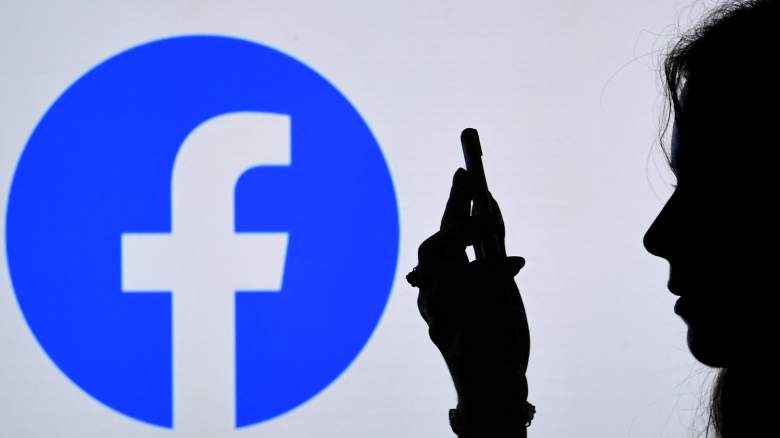
Getty Facebook Protect
Many people have just recently received an email from an account called “security@facebookmail” asking them to turn on “Facebook Protect” or their account will be disabled by a specific date. Is the email legitimate? What does the message mean? Read on for all the details.
Security@Facebookmail.com Is a Legitimate Email
Although the email itself might feel like a spam message of a phishing attempt, the email from security@facebookmail.com is indeed legitimate.
Facebook itself noted in a post from December 2017 that it uses the Facebookmail.com domain.
Facebook wrote, “Facebookmail.com is a common domain that Facebook uses to send notifications when we detect an attempt to log in to your account or change a password. If you’re unsure if an email you received was from Facebook, you can check its legitimacy by visiting facebook.com/settings to view a list of security-related emails that have been recently sent.”
However, there are always possibilities that someone might spoof the email to try to take advantage of the recent surge of “Protect” emails that Facebook is sending. If you have any concerns about clicking links in your email, just log into your Facebook account on your mobile app and you’ll get a popup requesting that you turn on Facebook Protect. Heavy discovered after receiving this email that a popup message was simultaneously enabled in their Facebook account.
Here’s the message that’s being sent out, which the author of this article also received. The blurred-out parts in the screenshot below should read your name and include your profile photo if it is the legitimate message.
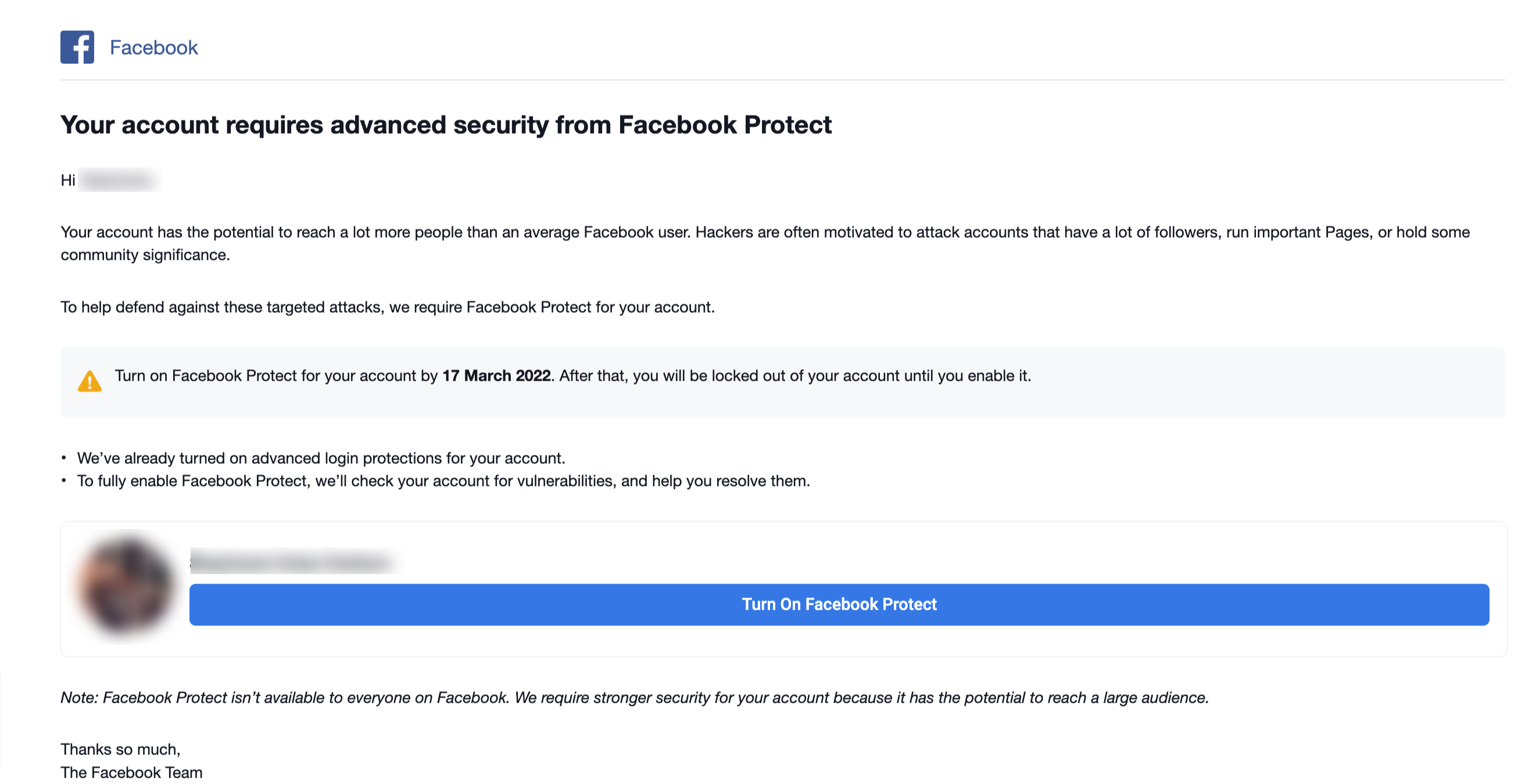
FacebookFacebook Protect email
The message reads: “Your account has the potential to reach a lot more people than an average Facebook user. Hackers are often motivated to attack accounts that have a lot of followers, run important Pages, or hold some community significance. To help defend against these targeted attacks, we require Facebook Protect for your account. Turn on Facebook Protect for your account by 17 March 2022. After that, you will be locked out of your account until you enable it.”
The message then goes on to share that they’ve already “turned on advanced login protections for your account” and that they will check for vulnerabilities and help you resolve them.
This is a legitimate message from Facebook and essentially boils down to a request to turn on Two Factor Authentication. This is not an email that will typically lead to Facebook asking for your ID to prove you own the account. (At least, Heavy did not receive this request when following the Facebook Protect instructions.)
Facebook Protect Will Add Advanced Security Functions to Your Account
Facebook Protect has slowly been rolled out to more and more people, but it appears that Facebook has recently added Facebook Protect requirements to quite a few additional accounts.
According to Google Trends, there was an uptick in Facebook Protect searches on March 1.
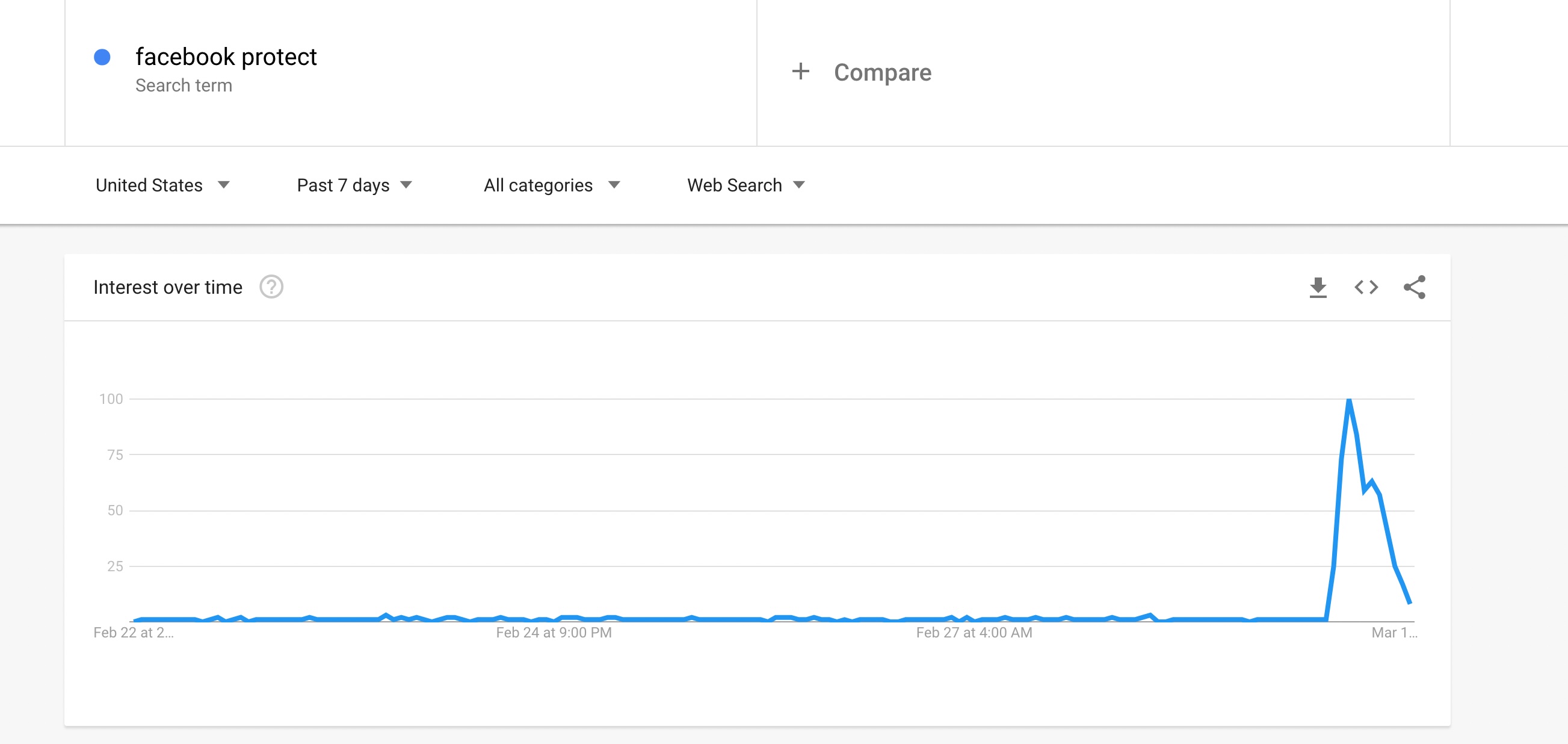
Google TrendsFacebook Protect
When you walk through the Facebook Protect setup, you’ll see screens like these.
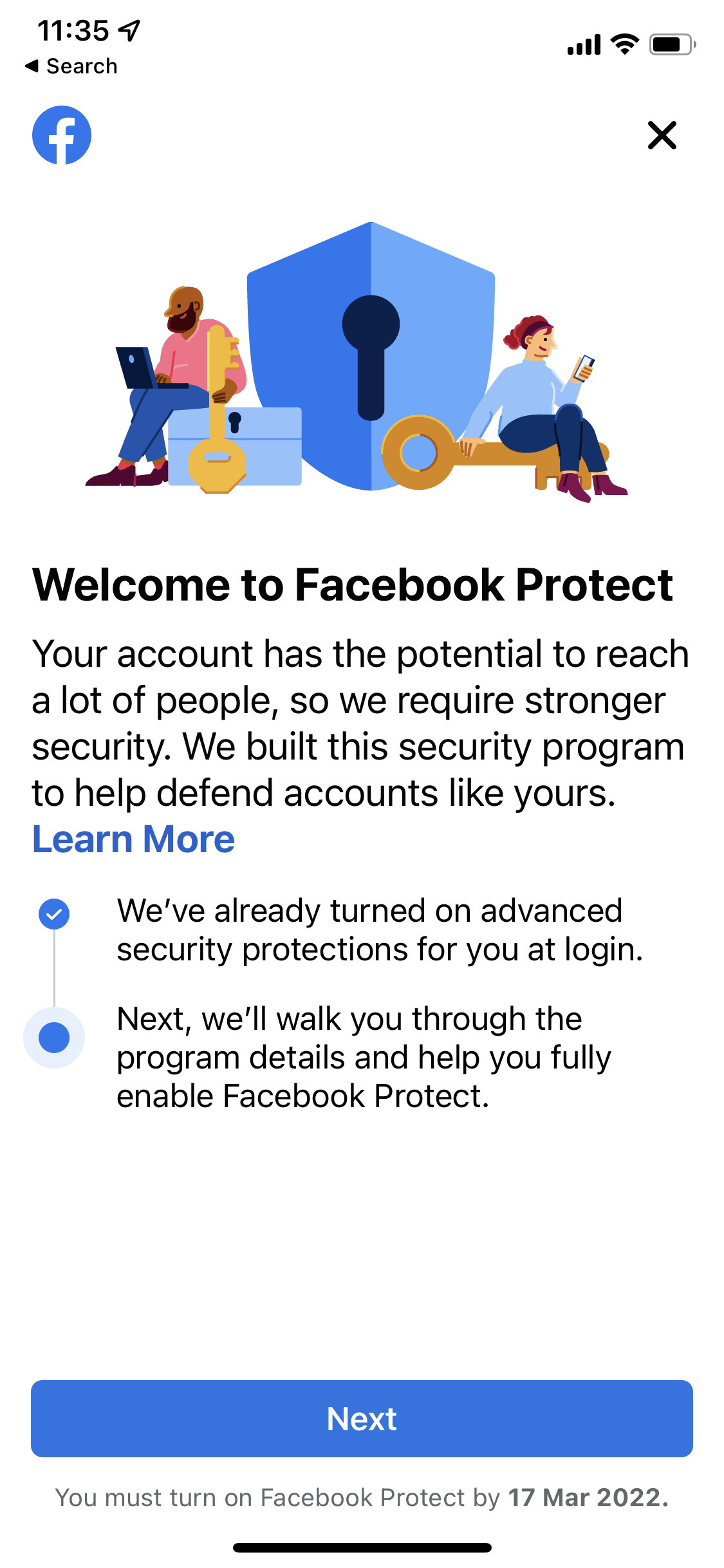
Facebook explains that for accounts with the potential to “reach a lot of people,” they require stronger security. They don’t explain what the cutoff is, but it appears they just recently decided to rollout Facebook Protect to even more people.
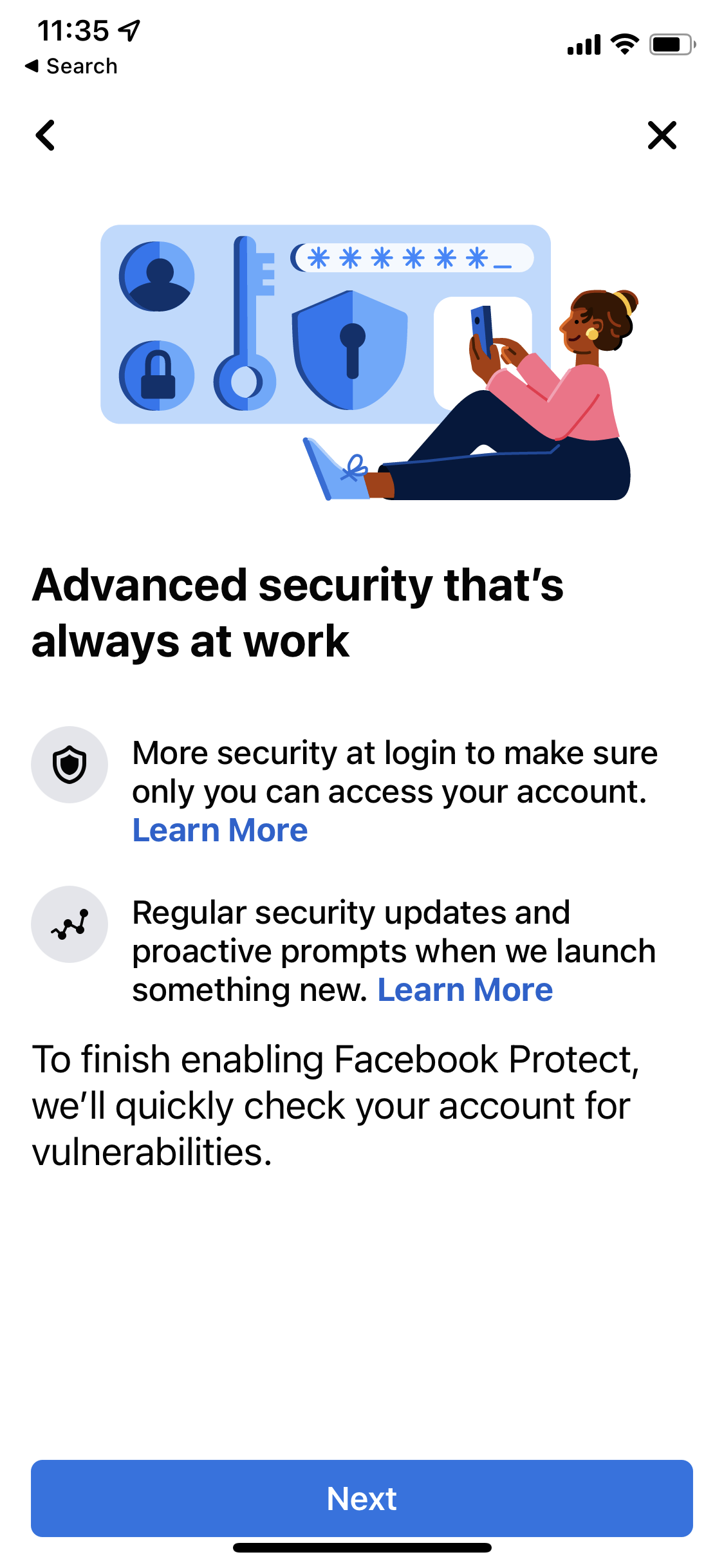
Facebook also notes that Facebook Protect will include features like increasing security log in so you’re the only one who can access your account. (This includes turning on two-factor authentication if you haven’t already.) They will also proactively alert you when they launch a new feature and will provide regular “security updates.”
When Facebook checks your account for vulnerabilities, it is essentially just checking your password strength and if you have two-factor authentication on, according to the steps involved in setting up Facebook Protect.
Wired reported in early December that Facebook would soon be requiring more users to install two-factor authentication, so this has been coming for a while.
Nathaniel Gleicher, head of Meta’s security policy, told Wired at the time: “We aren’t planning currently on rolling it out to everyone, but we can slowly expand within the communities where it’s most critical—communities where people could be most targeted and where the consequences would be most significant.”
It appears that Facebook has recently decided more communities are included under that critical umbrella.
Facebook noted on its website: “We’re currently rolling out Facebook Protect to more and more users around the world. People who are eligible for Facebook Protect will see prompts on Facebook to learn about the program and enroll. If you are not eligible for Facebook Protect but want to help improve your account security, you can learn how to turn on two-factor authentication.”
READ NEXT: Joe Biden’s Net Worth